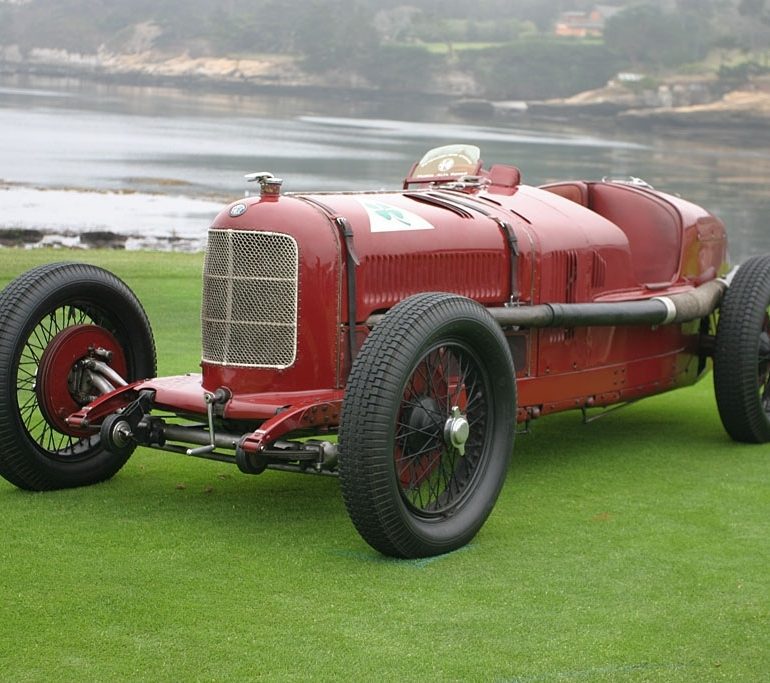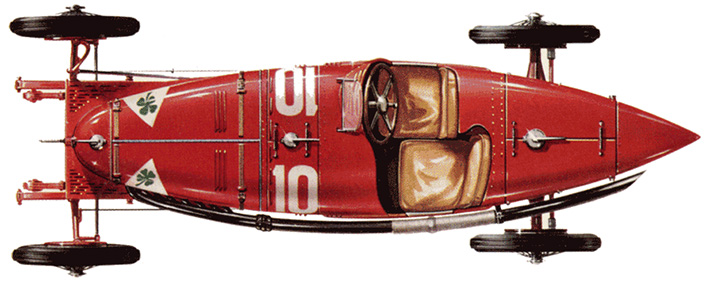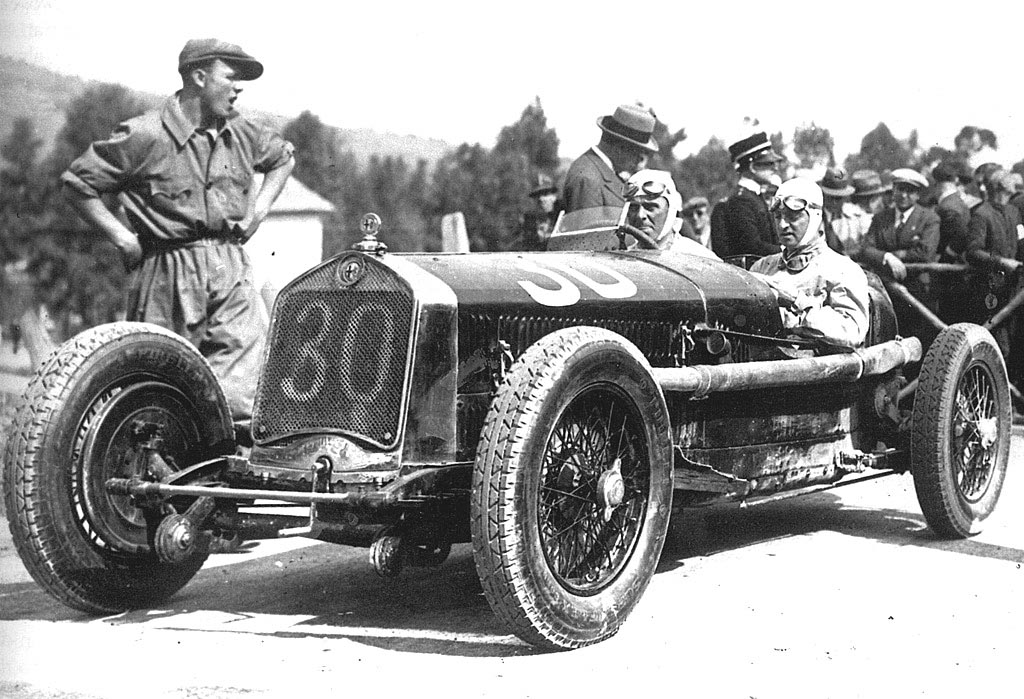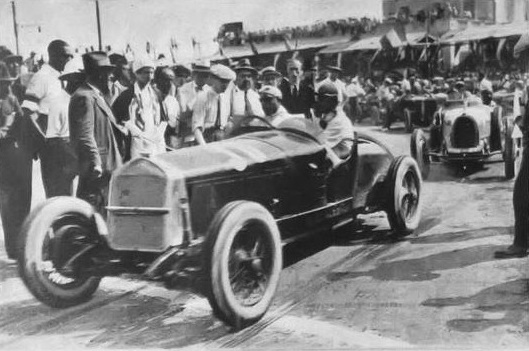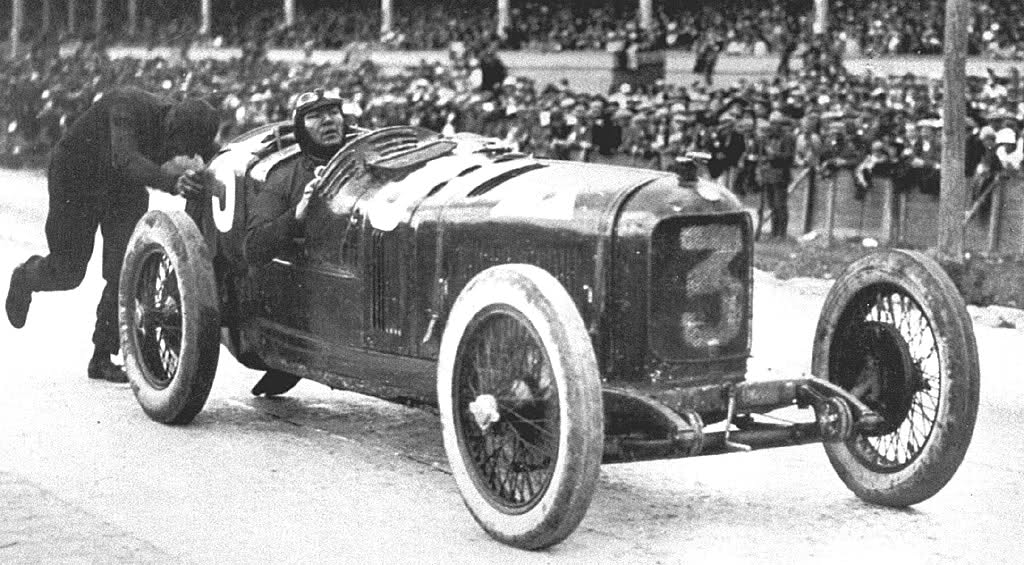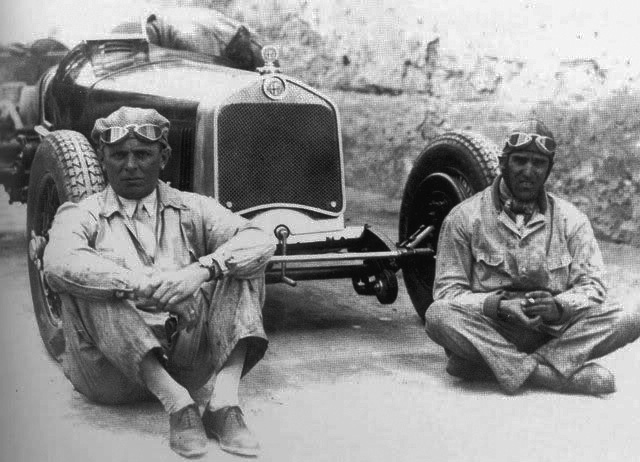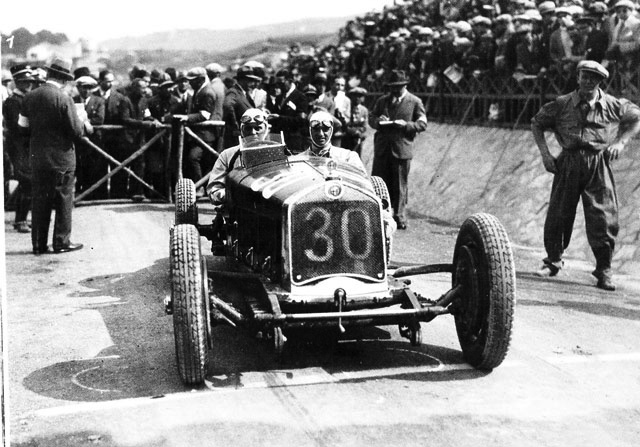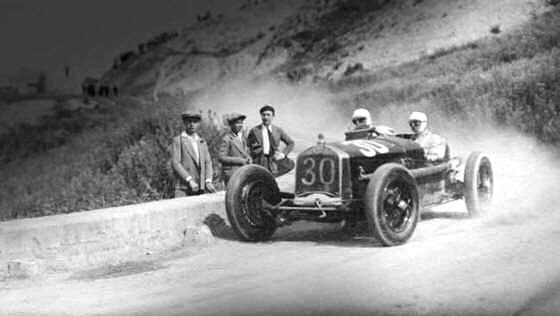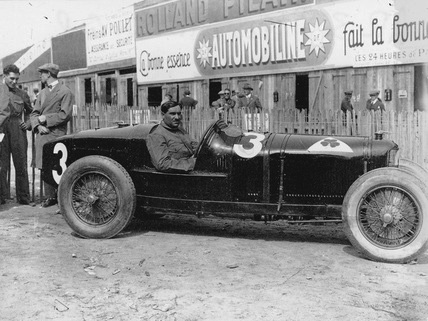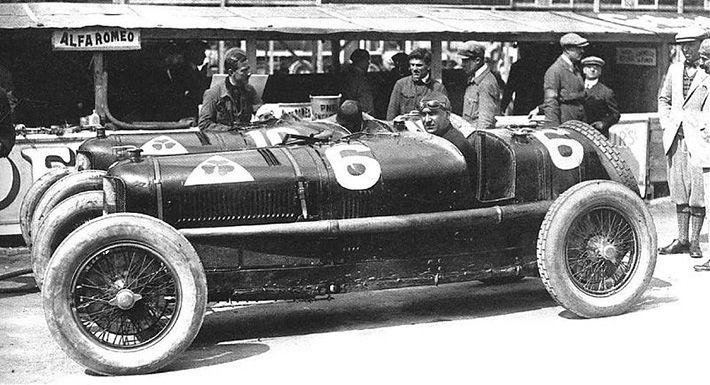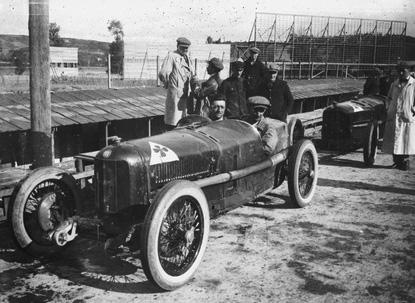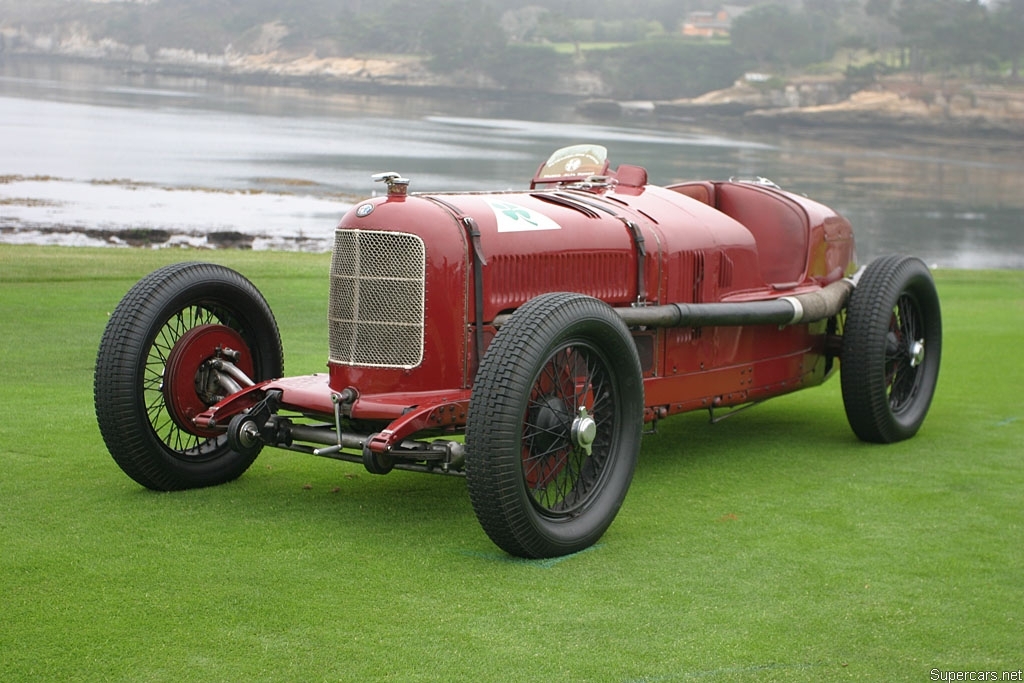Alfa Romeo P2
Car: Alfa Romeo P2 / Engine: 8-Cylinder In-line / Maker: Alfa Romeo / Bore X Stroke: 61.0 mm (2.4 in) / 85.0 mm (3.3 in) / Year: 1924 / Capacity: 1,987 cc / 121.3 cu in / Class: Grand Prix / Power: 155 bhp / 116 KW @ 5,500 rpm / Wheelbase: 2,624 mm (103.3 in) / Track: 1,302 mm (51.3 in) / 1,245 mm (49 in) / Weight: 1,654 lbs (Dry) / Top Speed: > 139 mph
Overview
The first car designed by Vittorio Jano in 1924, the P2 is also the first Alfa Romeo with an 8-cylinder supercharged engine and 2 carburetors placed after the compressor. Prepared in secret in the Portello workshops, the P2 makes a surprise debut at the 200-mile race at the 2nd Circuit of Cremona in 1924, winning the race with an incredible average speed of over 158 Km/hr and completing the 10 km speed trial at an average of 195 Km/hr. Its participation in the international Grand Prix of 1924 and 1925 leads to the first World Championship title, which led to the addition of the laurel wreath design to the logo. Considered one of the best Grand Prix cars of the twenties, the P2 helps to lay the foundations for the Alfa Romeo legend. Of the six models built (with cut off and long rears) only two remain, and can be found today in the Alfa Romeo Museum in Arese, while a version from 1930 is on display at the Automobile Museum in Turin.
The Alfa Romeo P2 In-Depth
Vittorio Jano along with Colin Chapman could arguably be called the greatest race car engineer in history. Born in 1891, he joined Fiat at the age of 20. Working as a junior draughtsman under Carlo Cavalli, the brilliant head of the Fiat design section, he eventually became head of the design team in 1921. While at Fiat he worked along side its test driver Luigi Bazzi. It was Bazzi who had left Fiat to join the newly formed Alfa Romeo, who recommended his former associate. Alfa Romeo’s car the P1 turned out to be a big disappointment and Jano was hired in 1923 and assisted by Secondo Molino, another ex-Fiat engineer he set out to design a completely new car from scratch. That car was the P2 which won its first race in 1924 and continue winning races for the next six years in one form or another.
Mechanic Giovanni Guidotti would later insist that Jarno had not taken any drawings from his previous employer so either he had a photographic memory or it was Molino who had taken the drawings for the P2 was powered by Alfa’s first straight-8 cylinder supercharged engine with 2 carburetors placed after the compressor that was more or less identical to Fiat’s Type 805! When Fiat’s driver, Pietro Bordino saw the new Alfa he would remark to their drivers that if they needed spare parts they could just as the Fiat team.
The weight of the car was reduced by 100 kilos from the weight of it’s predecessor. Prepared in secret in the Portello workshops, the P2 makes a surprise debut at the 200-mile Circuit of Cremona in 1924 With Ascari in the lead, the four examples of Alfa’s P2 entered in the race took first, second, third, and fourth places. average speed of over 158 Km/hr and completing the 10 km speed trial at an average of 195 Km/hr. Considered one of the best Grand Prix cars of the twenties, Alfa Romeo was able to win the first ever World Championship title. With that championship Alfa Romeo would embellish its familiar cross and serpent logo with a laurel wreath and lay the foundation for the Alfa Romeo legend.
An Alfa Romeo P2 was modified for season 1930 and entered in the legendary Targa Florio that year. When the fuel level became low during the race and the Alfa’s engine started to misfire, the mechanic inadvisably knelt on his seat and began to pour the fuel from the can into the rear-mounted tank. The Alfa was bouncing badly over the rough Sicilian roads and much of the fuel was spilled. Some of the fuel splashed onto the hot exhaust and ignited. The flames shot up round the driver’s neck, but Varzi drove on while the mechanic beat them out with a seat cushion. 26-year old Achille Varzi, would go on to win a legendary victory, breaking the average speed record for the race and ending Bugatti’s domination of the event.
During the Belgian Grand Prix at Spa in 1925 the local favorite Delage team had retired all of their cars and the race became an Alfa-Romeo parade led by Ascari and Campari. The fans began to make their displeasure known and Jano in response ordered his cars to pit. While they were being refueled the cars were cleaned and buffed. During this pitstop he had a table placed in full view whereupon he imperiously ate lunch, deaf to the howls of the spectators.
The cars rejoined the race and won with ease. So great was the P2’s dominastion that the car would go on to score 14 consecutive wins in major races but after 6 years the Alfas were superceded by other cars and the P2 was replaced by the Tipo B or P3 which was introduced in 1932. Only two of the six original P2 models survive, and they can be seen in the Alfa Romeo Museum in Arese and at the Turin Automobile Museum.
Image Gallery
Specs & Performance
| submitted by | Richard Owen |
| engine | Supercharged Inline-8 |
| position | Front Longitudinal |
| aspiration | Supercharged |
| valvetrain | DOHC 2 Valves / Cyl |
| displacement | 1987 cc / 121.3 in³ |
| bore | 61 mm / 2.4 in |
| stroke | 85 mm / 3.35 in |
| compression | 5.0:1 |
| power | 114.8 kw / 153.9 bhp @ 5500 rpm |
| specific output | 77.45 bhp per litre |
| bhp/weight | 206.02 bhp per tonne |
| body / frame | Pressed Steel |
| driven wheels | Front Engine / RWD |
| front tires | 29×4 |
| rear tires | 29×5 |
| front brakes | Drums |
| f brake size | mm / in |
| rear brakes | Drums |
| r brake size | mm / in |
| f suspension | Rigid Axle w/Semi-Elliptic Leaf Springs, Friction Shocks |
| r suspension | Live Axle w/Semi-Elliptic Leaf Springs, Friction Shocks |
| curb weight | 747 kg / 1647 lbs |
| wheelbase | 2624 mm / 103.3 in |
| front track | 1302 mm / 51.3 in |
| rear track | 1302 mm / 51.3 in |
| transmission | 4-Speed Manual |
| gear ratios | 2.88:1, 1.91:1, 1.27:1, 1.00:1, :1 |
| top speed | ~223.7 kph / 139.0 mph |


